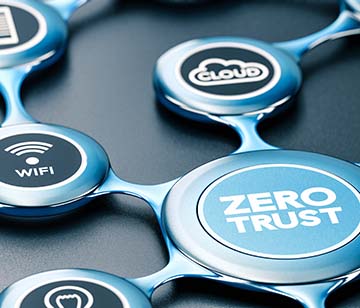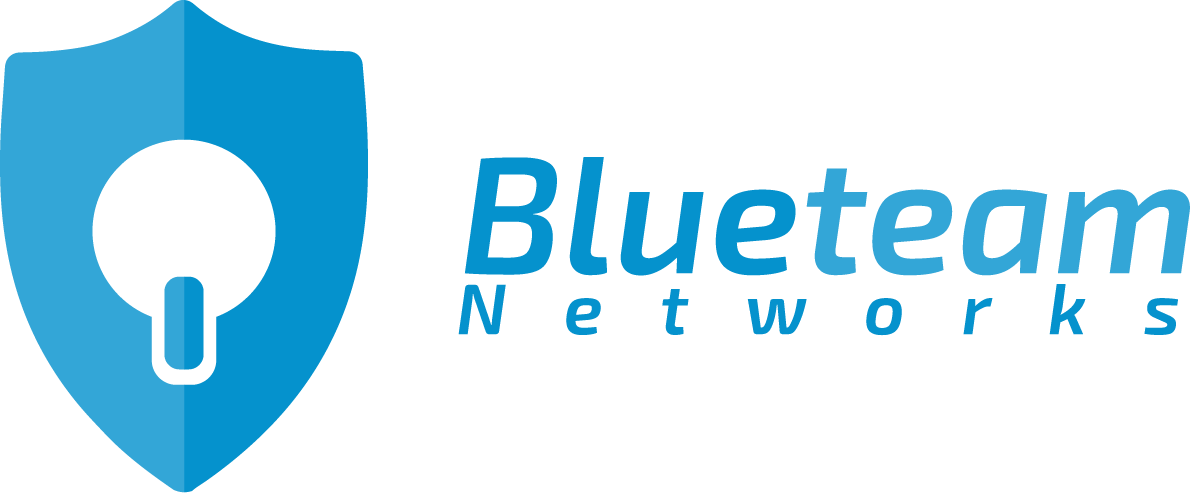6 min read
What Is Zero Trust Security in IT and Why Should Your Business Use It?
By: Jason Adams on Sep 30, 2022 10:00:00 AM

Remember the good old days when security was simple? You could just lock your valuable data in metal filing cabinets and keep threats at bay.
With fortified perimeter walls to lock out the bad guys, security was top-notch. In those days, threats came from outside, while everyone and everything inside the company received unquestionable trust. Well, those days are long gone!
Today, cybersecurity threats are growing by the day, wreaking havoc on businesses—big and small. The number of threats originating from inside sources is mind-boggling. As far back as 2016, a cybersecurity study by IBM found that 60% of all attacks were carried out by insiders.
So, what can organizations do from an IT perspective to rev up security and keep insider threats at bay?
One way is to implement zero-trust security.
In this article, we discuss zero trust security, including its core principles and importance to an organization. We’ll also touch on how businesses can implement the zero-trust model.
What Is Zero Trust Security?
The zero-trust framework requires all users, whether in or outside the company’s network, to be authenticated, authorized, and continuously validated before being granted access to an organization’s resources to ensure optimal security.
Basically, the concept behind zero-trust is “never trust, always verify.” This means that devices and users (irrespective of seniority and security clearance) are never trusted by default, even if they have previously been authenticated.
The Principles of Zero-Trust Security
The zero-trust model comprises the following five principles:
- Continuous verification
- Least privilege access
- Micro-segmentation
- Multi-factor authentication
- Device access control
1. Continuous Verification
Continuous verification means no trusted credentials, devices, or zones at any time. Hence, its common mantra “Never Trust, Always Verify” must always be observed. For continuous verification to work, several elements must be in place, including:
a.) Risk-Based Conditional Access
This policy ensures workflow is only interrupted when risk level changes, allowing continuous verification without impacting user experience.
b.) Dynamic Security Policies
Zero-risk does not only take business risk into account but compliance as well. This policy ensures continuous verification is carried out without compromising compliance.
See: IT Policies Every Small Business Should Implement
2. Least Privilege Access
This principle ensures that users only have access to the minimum access permission they need to perform their duties. The least privilege access principle minimizes exposure to sensitive information in the network and helps secure data while improving productivity.
The least privilege principle helps to limit users’ access with:
- JEA (just-enough-access) and JIT (just-in-time)
- Risk-based adaptive organizational policies
- Data protection
3. Micro-segmentation
An effective zero-trust infrastructure utilizes micro-segmentation to create multiple protected zones rather than a single secured perimeter.
Micro-segmentation is a process that divides security perimeters into small, separate zones to ensure optimal security. This way, a user cannot access other zones apart from the one they’ve been cleared for unless they’re granted additional access privileges.
See:12 Ways to Optimize Security for Office 365
4. Multi-Factor Authentication
Multi-factor authorization or MFA is another fundamental principle of zero-trust security. MFA is a layered approach to data security that requires users to present a combination of two or more credentials to verify their identity for login.
Users who enable multi-factor authentication have to enter a password and another identification code, sent to another device like a phone or computer, to verify that they’re really who they claim to be by possessing a registered device.
See: How Multifactor Authentication (MFA) Protects Your Business Against Cyber Threats
5. Device Access Controls
Aside from user access control, zero-trust architecture also provides strict control over devices that access the network. These systems monitor all the devices attempting to access the network to minimize the attack surface on the network.
See: Cybersecurity Tips for Working Remotely
Why Use the Zero Trust Security Model
Modern IT infrastructure consists of many interconnected components, including cloud-based services, on-premise servers, edge locations, connected mobile devices, and internet of things (IoT) devices. A traditional data security model that relies on securing the “network perimeter” is ineffective in such a complex environment.
See: Cloud vs. Physical or Local Backup: Which is Better?
The reason?
Attackers can compromise the network perimeter and gain access to a company’s network and systems behind the firewall. They could potentially gain access to cloud-based resources located outside of the company’s perimeter wall.
A zero-trust model enhances security, dramatically decreasing the likelihood of such incidents from happening. This model establishes micro-perimeters around the company resources, including applications and cloud-based services, to keep the security tight.
Moreover, a zero-trust architecture employs advanced security mechanisms based on strict user authentication, such as device verification & identity, multi-factor authentication, etc.
It validates users at every login to ensure that even if an employee’s password is compromised in a data breach, the hacker will not gain access to the company’s resources using the compromised login credentials.
How to Implement Zero Trust Policies
Now that you know the benefits of a zero-trust model, how do you implement it? Here’s a breakdown of the various steps to take.
- Audit your organizational resources (data assets)
- Identify data most in need in your organization
- Limit user access, starting with the high-risk data
Once your business fully adopts the zero-risk model, you can begin upgrading your security protocols with identity and device technologies that will allow for more secure access and better decision-making.
Data encryption services, including granular access control, are the pinnacle of the zero trust model because they break down security perimeters to the micro-level, providing top-notch security to each data object. A backup disaster and recovery plan is another layer that is critical in securing your business and data so that in the event your data is lost - by human error, malicious activity, or even natural disasters; you can get back to operating quickly and easily.
With insider threats becoming more and more prevalent, there has never been a better time to consider implementing zero trust models in your business.
Get in touch with us today to learn more about zero-trust policies and how the expert IT Consultants at Blueteam Networks in Central Ohio can help you implement a robust zero-trust architecture to protect your network systems and data.
Recent Posts
How and Why Your Business Needs to Conduct a Cybersecurity Audit
When was the last time you conducted a comprehensive cybersecurity audit?
Small Business Software Vulnerabilities Hackers Love
For many small and medium-sized enterprises, it's not until after a breach has occurred that...
Reply Chain Phishing: What Your Business Needs to Know
Cyber crimes reached new heights and drew more attention than ever in 2021.


